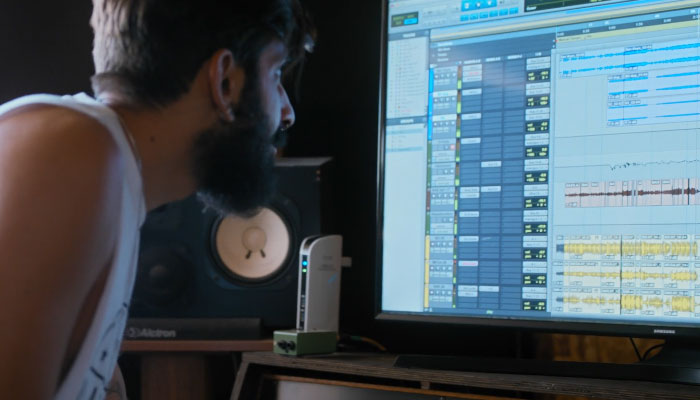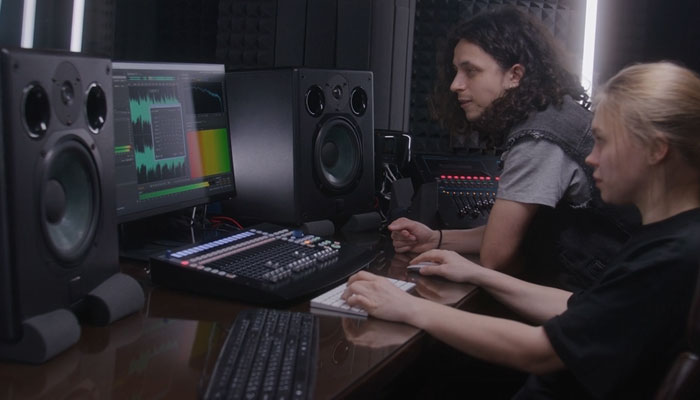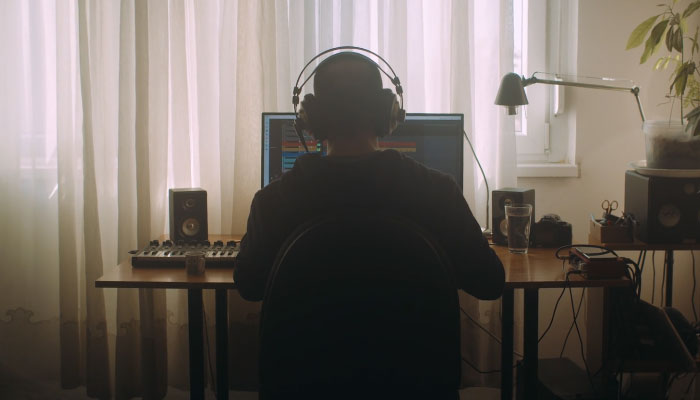Music production is the process of transforming a musical idea into a finished, polished recording ready for your target audience of listeners to enjoy. It’s both an art and a technical craft, blending both creativity and technology.
From writing melodies and arranging instruments to recording vocals, mixing sounds, and mastering the final track, every step in music production shapes how a song feels and connects with your target audience.
This comprehensive guide covers everything you need to know about music production, so without further ado, let's get straight into it.
What is Music Production?
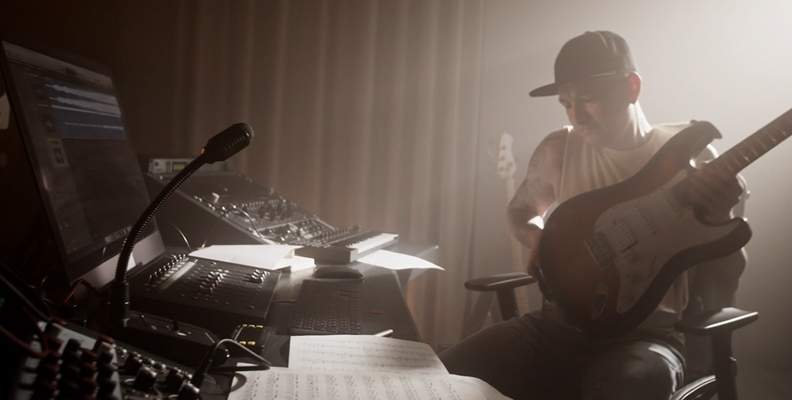
Music production is the process of turning an idea, a melody, a riff, or an emotion into a complete song that others can hear and connect with. It blends creativity and technical skill, involving decisions about how a song should sound, what emotions it conveys, and how all the elements fit together.
A producer’s role can vary: guiding artists in the studio, shaping arrangements, or creating music entirely on a laptop. While modern tools like DAWs, virtual instruments, and plug-ins make production more accessible than ever, the core of music production is about understanding sound, making creative choices, and ensuring all recorded music tells a story or evokes emotion.
In short, music production is where art and sound design meet during the recording project, transforming ideas into something real that moves people.
What are the Key Stages of Music Production?
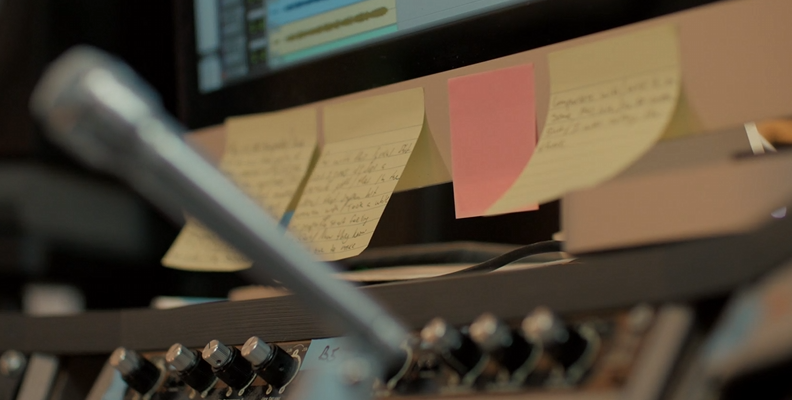
Music production isn’t a single step; it’s a series of stages that take a song from a rough idea you whistled in your head to a finished track. Each stage has its own purpose, challenges, and creative decisions. While the recording process can vary depending on the style of music or the people involved, most songs go through the same general phases.
Songwriting and Composition
Everything starts with an idea. This is where melodies, chords, lyrics, and rhythms begin to take shape. Sometimes it’s just a few lines or a short loop, while other times, it’s a full arrangement. The goal here is to build the foundation of the song and figure out what story or emotion it’s meant to express.
Arrangement
Once the core idea is in place, it’s time to decide how the song will flow. Arrangement is about structure — which instruments come in when, how verses and choruses connect, and how the energy rises and falls. A good arrangement keeps listeners engaged and makes the song feel dynamic from start to finish.
Sound Design and Instrumentation
This is where the song starts to gain its identity. Record producers choose or create the sounds that define the track — from drums and synths to guitars and textures. In electronic music, this might mean programming beats and designing synth patches; in a band setting, it could mean deciding on tones, mic placement, and performance style. Using music theory or not, as a music producer, you're free to express yourself in any way you believe will communicate best with your audience.
Recording
Recording captures all the performances — vocals, instruments, and any other elements that make up the track. Whether the recording session is done in a professional studio with cutting-edge recording technology or a bedroom setup, this stage is about getting clean, expressive takes that bring the song to life. You don't need to be a professional recording engineer to record your first track. You will start learning quickly with each new recording.
Editing
In this phase of the production process, the best takes are cleaned up and fine-tuned. Timing, pitch, and small imperfections are adjusted, and a skilled producer would make sure everything feels tight and cohesive while ensuring recorded tracks don't lose the natural performance feel.
Mixing
Mixing music is where all the recorded and programmed parts are balanced together. The producer (or mixing engineer) adjusts levels, panning, EQ, compression, and effects to make every element sit properly in the mix. This stage gives the song its space, clarity, and overall polish. Hearing the final mix is often a whole different world compared to the first few drafts of your song.
Mastering
The role of a mastering engineer is to prepare the track for release. As the final step, mastering music means ensuring the song sounds consistent across all speakers and platforms, matches industry loudness standards, and flows smoothly if it’s part of an album or playlist.
Music Production Software Choices
In today’s world, music production isn’t limited only to big studios equipped with industry-grade, expensive gear. With digital audio workstations (DAWs), affordable equipment, and online collaboration tools, artists and producers can create professional-sounding music from the comfort of their homes.
Here are three software choices you can consider if looking to start with music production:
Samplitude (Boris FX)

Samplitude is known for its high-quality audio engine and precise editing tools. It’s particularly strong in recording, mixing, and mastering, making it a favorite for professional producers who want full control over every detail of their tracks. Its advanced features allow for complex arrangements and detailed sound shaping, ideal for those who want to dive deep into production and be a one-man production team without a steep learning curve.
Ableton Live

Ableton Live is popular for its intuitive workflow and versatility, and many producers love it for its technical aspects, especially in electronic music and live performance. Its session view allows producers to experiment with loops, samples, and MIDI in real time, making it a go-to DAW for creative exploration. Ableton also has a huge library of instruments and effects, and integrates seamlessly with hardware controllers.
FL Studio

FL Studio is known for its user-friendly interface and strong pattern-based workflow, which makes beat-making and sequencing quick and intuitive. It’s widely used in hip-hop, pop, and electronic music production. With a comprehensive set of plug-ins, virtual instruments, and mixing tools, FL Studio offers everything a beginner or experienced producer needs to bring ideas to life. Some of the best songs in modern hip-hop were produced in FL Studio.
Music Production in Different Genres
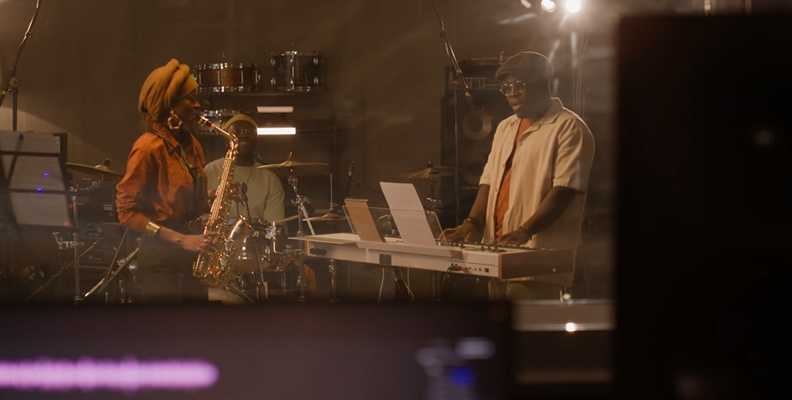
While the core principles of music production stay the same — recording, arranging, mixing, and mastering — every genre has its own approach, tools, and creative mindset. The producer’s role and main aim often shift depending on the style of music, adapting to what makes that genre unique.
Pop music focuses on clarity, structure, and polish. Producers in this space work to craft catchy melodies, tight arrangements, and radio-friendly mixes. Layering vocals, refining drum sounds, and balancing every element for maximum impact are key parts of the process.
Hip-hop production is built around rhythm and texture. Producers often start with a beat — sampling, programming drums, and designing bass lines that carry the groove. Vocal production plays a big role here too, as the mix needs to make the artist’s flow and lyrics stand out while keeping the beat powerful and clean.
Electronic music is a world of its own. Producers here often act as composers, sound designers, and engineers all at once. Software synthesizers, drum machines, and digital audio workstations become instruments. The emphasis is on crafting original sounds and building energy through arrangement and dynamics rather than traditional instrumentation. Making music in this genre can be done by utilizing many different skills, and it requires a lot of creative influence, so don't be afraid to see what other artists are doing with their work as an example while working on your projects.
Rock and metal production leans on live performance. Capturing the energy of real instruments — especially guitars and drums — is crucial. Producers focus on mic placement, amp tones, and natural dynamics, aiming for a mix that feels both powerful and organic, and following best performance practices.
Jazz and acoustic genres take a more purist approach. The goal is usually to preserve the authenticity and subtlety of the performance rather than reshape it. Production techniques emphasize space, warmth, and clarity, while the producer takes a minimal processing approach to let the musicianship shine through in the final product.
Each genre has its own “language” in production, but the best producers and musicians know how to translate between them — borrowing techniques, breaking conventions, and shaping sounds that push music forward.
Music Production Equipment You Need to Start
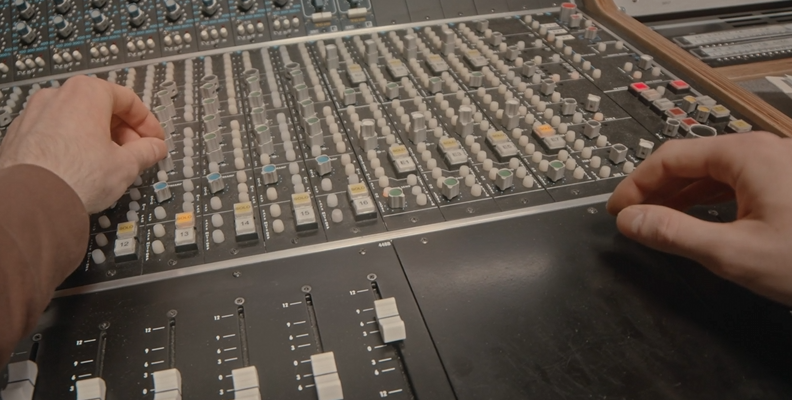
Getting into music production doesn’t mean you need a studio full of expensive gear. With just a few essential tools, you can create professional-sounding tracks right from your bedroom. What matters most is understanding how to use what you have and building up your setup over time.
Computer
Your computer is the heart of your studio. Whether it’s a laptop or desktop, Mac or PC, it should be powerful enough to handle your recording and mixing sessions.Digital Audio Workstation (DAW)
The DAW is your main production software, and the heart of your production setup. It’s where you record, edit, and arrange your music. Popular choices include Samplitude, Ableton Live, FL Studio, Logic Pro, Reaper, and Pro Tools. Most DAWs offer free trials, so it’s worth testing a few to see which workflow feels most natural to you.Audio Interface
An audio interface connects your instruments and microphones to your computer, improving sound quality compared to built-in sound cards. It converts analog signals into digital ones and vice versa. Even a small two-input interface from brands like Focusrite or PreSonus is enough to start.Studio Monitors or Headphones
Accurate listening is key to good production. Studio monitors give you a flat, balanced sound so you can make mixing decisions confidently. If you can’t use speakers due to space or noise, a good pair of studio headphones is a great alternative — look for models designed for mixing rather than consumer listening.Microphone
If you plan to record vocals or acoustic instruments, a decent condenser microphone is essential. It captures detail and clarity, making it ideal for most home studios. For louder sources like guitar amps, a dynamic mic might be a better choice.MIDI Controller
A MIDI keyboard or pad controller lets you virtually play all the instruments and control your DAW more intuitively. It’s not mandatory, but it provides more creative control and makes composing melodies, chords, and beats much easier than using a mouse and keyboard alone.Cables and Accessories
Don’t overlook the small things — XLR cables, pop filters, mic stands, and shock mounts all help improve sound quality and recording comfort. Keeping your workspace organized also makes the creative process smoother.
Common Mistakes in Music Production
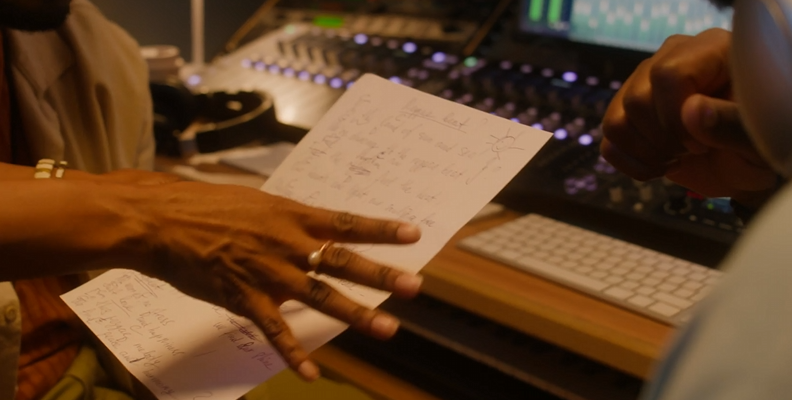
Every producer makes mistakes — it’s part of learning the craft. The good news is that most problems in music production come down to habits that can be easily fixed once you’re aware of them. Here are some of the most common ones to avoid.
Mixing too Early
One of the biggest beginner mistakes is trying to mix before the track is fully arranged. It’s tempting to start tweaking EQs and compressors right away, but mixing decisions only make sense when all the parts are in place. Focus on finishing your composition first — then fine-tune the mix once the song’s structure is solid.Overprocessing the Sound
Many newcomers fall into the trap of adding too many plug-ins — layering EQs, compressors, and effects until the mix loses clarity. The best mixes often come from clean, balanced recordings. Use processing to enhance what’s already there, not to fix what wasn’t recorded well, or drop your favorite artist's song into your DAW and see how they solve specific problems. When it comes to audio engineering, most of the time, less is more.Ignoring Gain Staging
Proper volume management is one of the foundations of good production. If your input levels are too high, you’ll get distortion; too low, and your mix will sound weak. Keep an eye on your meters and aim for healthy levels without hitting the red.Neglecting Room Acoustics
Even the best mix can sound off if your listening environment isn’t treated. Hard walls, corners, and poor speaker placement can distort how you hear frequencies. Simple fixes like adding foam panels or mixing on good headphones can make a big difference.Skipping Reference Tracks
Listening to professionally mixed songs from popular record labels in the same genre helps you stay grounded. Reference tracks give you a sense of how loud, bright, or bass-heavy your mix should sound. Without them, it’s easy to lose perspective. Don't be afraid to get inspired by other songs, especially ones you really like.Forgetting About Arrangement and Dynamics
Production isn’t just about sound quality — it’s also about how the track evolves. A song that stays the same from start to finish can feel flat, no matter how clean the mix is. Build tension and release by changing elements, volume, or energy throughout the track.Not Finishing Projects
Many beginners get stuck in endless tweaking. It’s easy to chase perfection and never call a track done. But finishing — even imperfectly — is how you learn and improve. Every completed project teaches you something new for the next one.
Final Words
That concludes our music production guide. Hopefully, we helped you understand the process better.
Getting into music production can feel very daunting at first, but we live in a time where modern tools and software make things much simpler and easier, so this hobby or career direction is no longer reserved for expensive studios and rich production houses only.
We encourage you to pursue your creative dreams and publish your first song in the near future!
FAQ
Can I learn music production on my own?
You can learn music production on your own, especially at this time when many tools and tutorials are available. Although they can be helpful, online or in-person courses and classes are not necessary to become a good music producer. There are many artists who learned how to produce music on their own and became popular by simply learning by making their own music and improving each new release.








